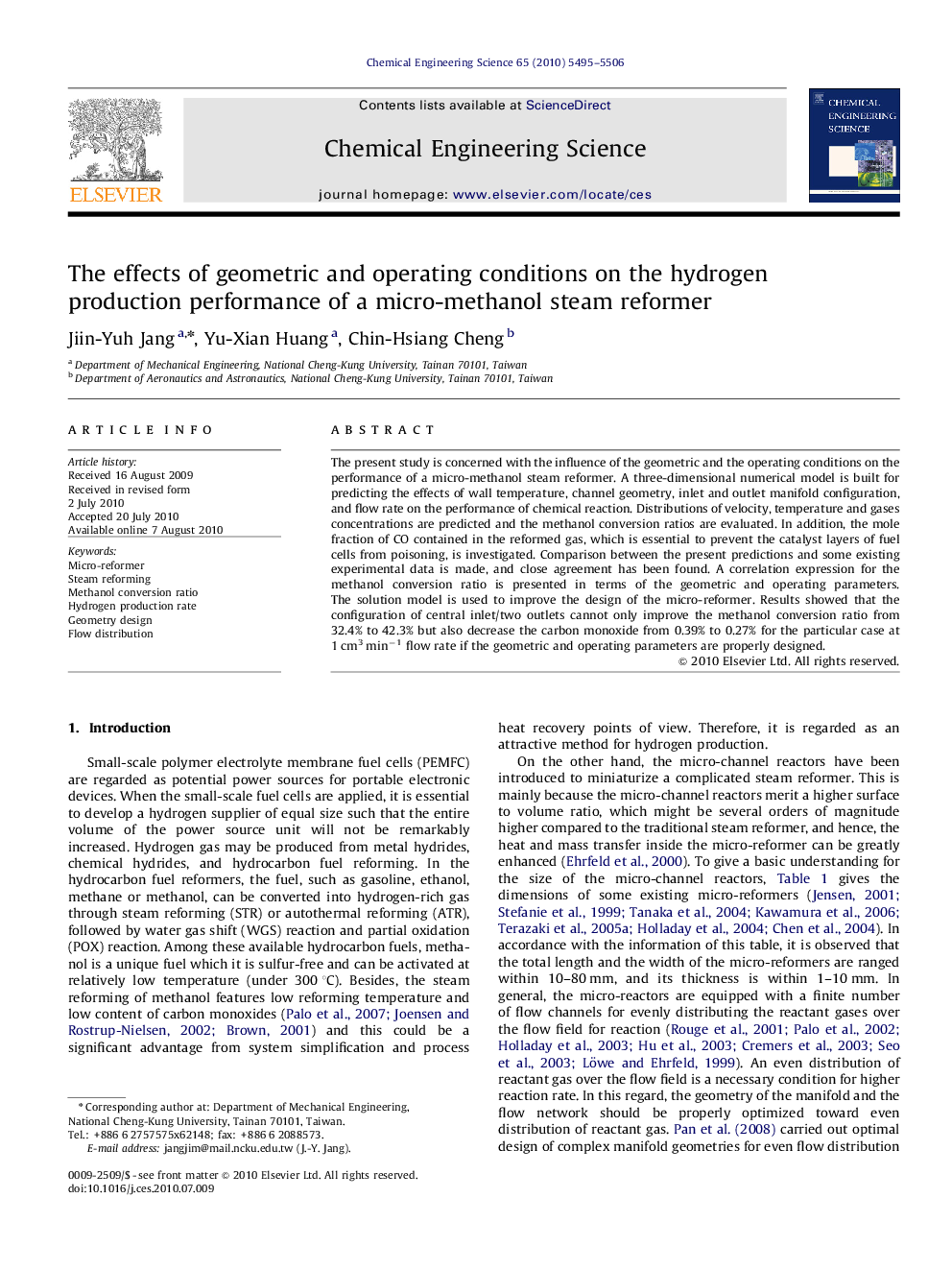| Article ID | Journal | Published Year | Pages | File Type |
|---|---|---|---|---|
| 156593 | Chemical Engineering Science | 2010 | 12 Pages |
The present study is concerned with the influence of the geometric and the operating conditions on the performance of a micro-methanol steam reformer. A three-dimensional numerical model is built for predicting the effects of wall temperature, channel geometry, inlet and outlet manifold configuration, and flow rate on the performance of chemical reaction. Distributions of velocity, temperature and gases concentrations are predicted and the methanol conversion ratios are evaluated. In addition, the mole fraction of CO contained in the reformed gas, which is essential to prevent the catalyst layers of fuel cells from poisoning, is investigated. Comparison between the present predictions and some existing experimental data is made, and close agreement has been found. A correlation expression for the methanol conversion ratio is presented in terms of the geometric and operating parameters. The solution model is used to improve the design of the micro-reformer. Results showed that the configuration of central inlet/two outlets cannot only improve the methanol conversion ratio from 32.4% to 42.3% but also decrease the carbon monoxide from 0.39% to 0.27% for the particular case at 1 cm3 min−1 flow rate if the geometric and operating parameters are properly designed.
